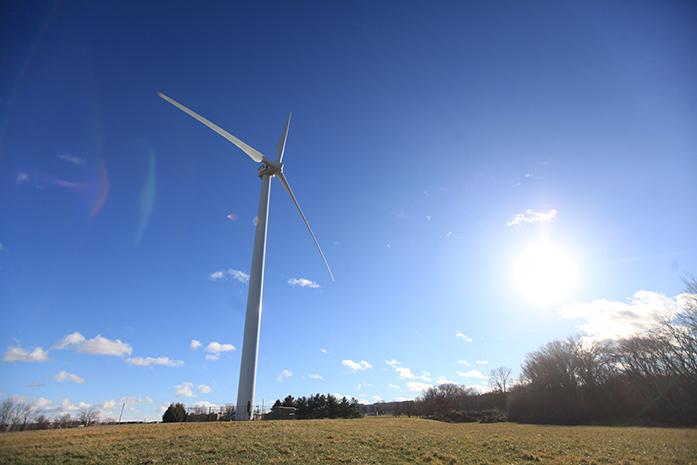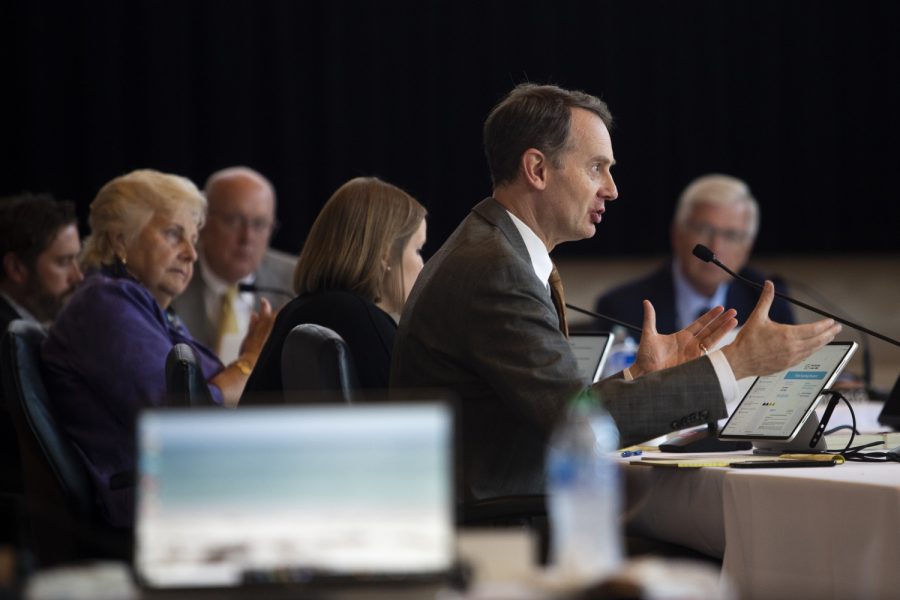By Austin Petroski
University of Iowa Provost P. Barry Butler gave a presentation on the benefits of wind energy at the Johnson County Heath and Human Services Building Thursday.
He described the history of wind turbines and their presence in Iowa and the world. Butler is a professor of mechanical and industrial engineering along with co-chairing American Wind Energy Association’s Research and Development Committee.
Butler said Iowa is at a good location for wind energy.
“We are in a unique place for capturing wind,” Butler said.
Butler said wind energy has come a long way since its origins in Persia around the year 500 A.D. The Dutch 1800s windmill design, which many people associate with the Iowa towns of Pella and Orange City, were very different from today’s wind turbines. Wind turbines used to be very common throughout the Midwest, he said, but after the introduction of electricity to rural areas, the number of turbines dropped significantly.
Butler said using wind energy to generate electricity became popular in 1980s California. It was very unreliable, but set the stage for improvement. Many of those installations were later abandoned, he said.
Today’s wind turbines use blades, which are now air foils similar to those on airplanes or gliders. The famous triple-blade design has the best efficiency, and the blades also have the ability to pitch, or move with the wind, which optimizes power and also makes the turbines safer.
Butler said wind energy has put Iowa on the map around the world.
“People from Europe know about Iowa from our wind-energy production,” he said.
Butler said the United States has set a goal for 20 percent wind energy production by 2030. The country has been on and off that pace, Butler said.
Life expectancy for wind turbines roughly 20 years, Butler said. He said that allowed for the change of technology to keep up with the deterioration of the turbine.
Butler said wind turbines are much more common in rural areas than in urban areas because there are better wind resources. The wind is much better away from trees and the effects of buildings, he said.
The Midwest is much common in its use of wind energy compared with many other parts of the United States. Butler said wind energy is less common in other areas of the US because there is less wind available for energy generation.
“If you don’t have the resource, it is hard to start,” Butler said.
Johnson County sustainability specialist Becky Soglin said Johnson County has been interested in the use of wind energy for some time. Soglin said the county became one of two counties in Iowa to attain the Small Wind Designation Zone.
Josh Busard, the county sustainability coordinator, said the ordinance has only been around a short time.
“The ordinance was passed in 2012,” Busard said.
Soglin said the ordinance help loosen regulations for private wind energy turbines.
“It was easier for people to build appropriate wind turbines for private property,” Soglin said.







